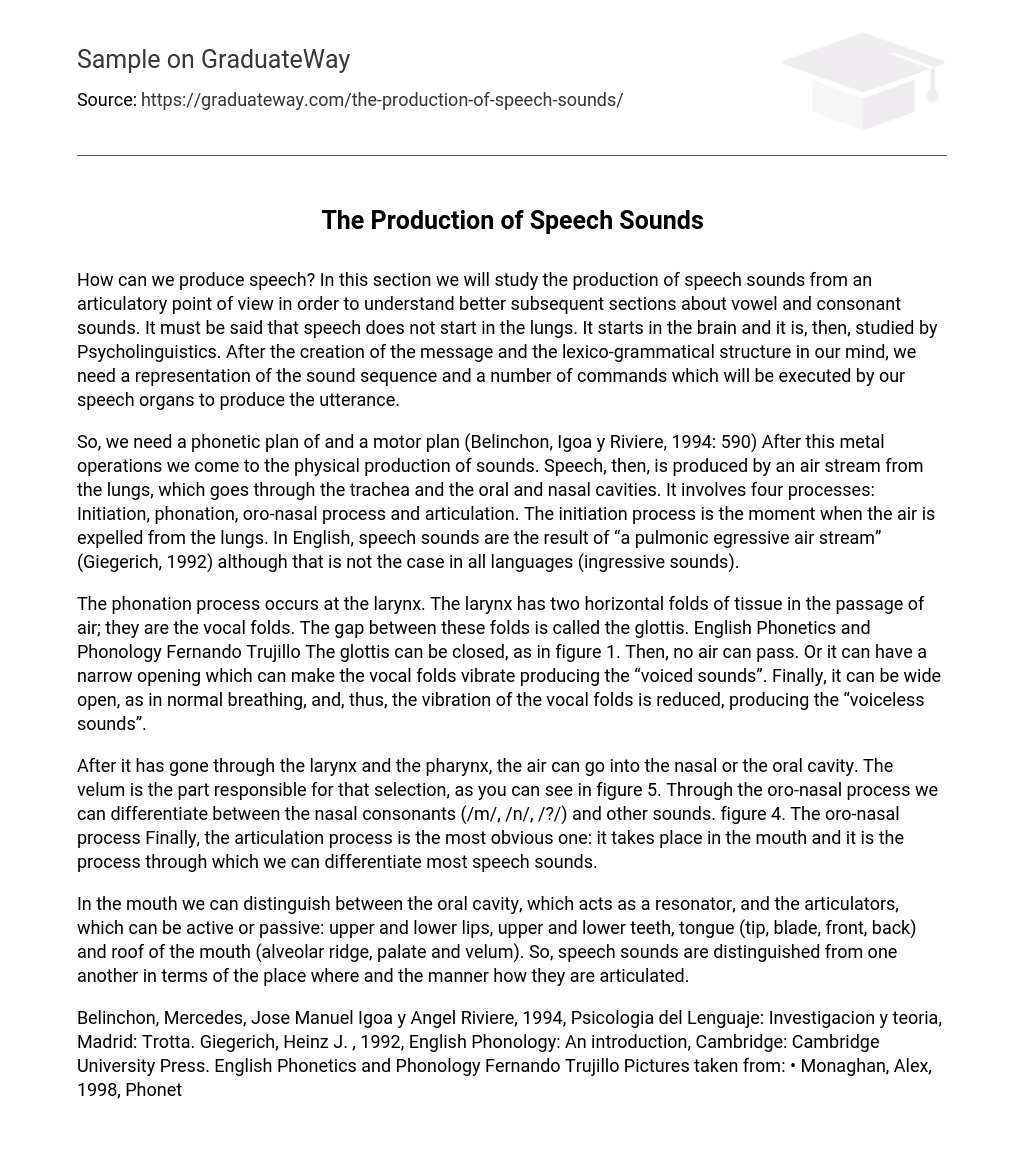This section aims to delve into the articulatory perspective of producing speech sounds. Understanding this is crucial for comprehending subsequent sections on vowel and consonant sounds. It should be emphasized that speech does not start in the lungs but rather originates in the brain, which is then studied by Psycholinguistics. After forming a message and lexico-grammatical structure mentally, we need both a representation of the sound sequence and a set of commands for our speech organs to carry out in order to produce spoken words.
According to Belinchon, Igoa y Riviere (1994: 590), we require a phonetic plan and a motor plan for speech production. These plans lead to the physical production of sounds. Speech is created when an air stream is expelled from the lungs through the trachea, as well as the oral and nasal cavities. This process involves four steps: initiation, phonation, oro-nasal process, and articulation. Initiation occurs when the air is forced out of the lungs. In English, speech sounds are formed by a “pulmonic egressive air stream” (Giegerich, 1992). However, not all languages follow this pattern, as some produce ingressive sounds.
The process of phonation takes place in the larynx, where there are two horizontal folds of tissue known as the vocal folds. These folds create a gap called the glottis. The glottis can be closed, preventing air from passing, or it can have a narrow opening that allows the vocal folds to vibrate, producing voiced sounds. In normal breathing, the glottis is wide open, reducing the vibration of the vocal folds and producing voiceless sounds (English Phonetics and Phonology Fernando Trujillo, figure 1).
After passing through the larynx and pharynx, the air can enter either the nasal or oral cavity. Figure 5 illustrates that the velum controls this selection. The oro-nasal process, as shown in figure 4, allows us to distinguish between nasal consonants (/m/, /n/, /ŋ/) and other sounds. Ultimately, the articulation process occurs in the mouth and is the most evident means by which we differentiate speech sounds.
The mouth is made up of two primary parts: the oral cavity and the articulators. The oral cavity acts as a resonator, while the articulators can be active or passive. These consist of the upper and lower lips, upper and lower teeth, various sections of the tongue (tip, blade, front, and back), as well as the roof of the mouth (alveolar ridge, palate, and velum). As a result, speech sounds are distinguished by their specific position and manner of production.
Belinchon, Mercedes, Jose Manuel Igoa and Angel Riviere, 1994, Psicologia del Lenguaje: Investigacion y teoria, Madrid: Trotta. Giegerich, Heinz J. , 1992, English Phonology: An introduction, Cambridge: Cambridge University Press. English Phonetics and Phonology Fernando Trujillo Pictures taken from: • Monaghan, Alex, 1998, Phonetics: Processes of Speech Production, Available from http://www. compapp. dcu. ie/~alex/CA162/PHONETICS/processes. html • Coleman, John, 2001, The vocal tract and larynx, Available from http://www. phon. ox. ac. uk/~jcoleman/phonation. htm figure 1. Closed glottis figure2. Open glottis fig. 3. The Larynx





